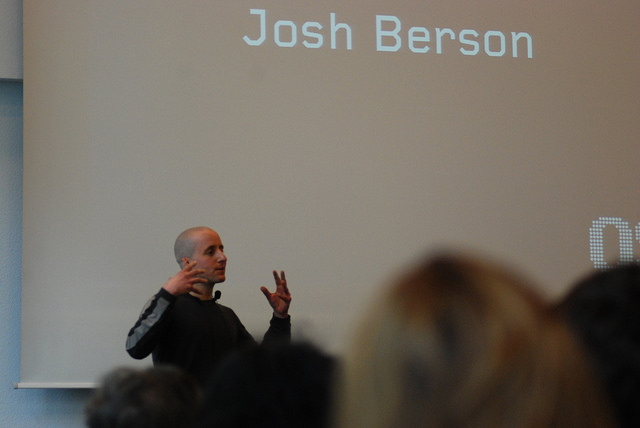QSEU14 Breakout: Cartographies of Rest
Ernesto Ramirez
June 17, 2014
Today’s post comes to us from Josh Berson. Josh is a anthropologist and researcher at the Max Plank Institute. In the fall of 2014 Josh and his colleagues will be embarking on an ambitious research program to explore how we understand and engage in activity and rest. This research project, housed at the Hub at Wellcome Collection, is still in it’s early stages and Josh sought to discuss and gain insight into how people think about measuring activity and rest, as well as how they perceive participatory research projects. You’re invited to read Josh’s description of the session below and then join the discussion on the QS Forum.

Cartographies of Rest
by Josh Berson
In the Cartographies of Rest breakout, we were looking for practical guidance on setting up a large study using self-tracking technologies to elicit a synoptic picture of contemporary rhythms of rest and activity in densely inhabited urban spaces. The response was great. We had participants with backgrounds in voice analysis, geovisualization, and the design of participatory public health interventions. Some of these conversations will probably lead to formal working relationships with the Hub at Wellcome Collection, the umbrella project under which Cartographies of Rest is being carried out.
But the key insight we came away with had little to do with the technical apparatus or tracking channels for the study. Rather, it was that we would do well to present the demands we’re making of our research participants not as an inconvenience but as an opportunity to be part of an innovative collective approach to generating knowledge about how we move (and stop moving) through shared space. We need to make sure the design of the study, and the way we communicate the study’s aims to participants, reflects our core conceit, to wit, that activity and rest are social phenomena, and their physiological and behavioral correlates are conditioned by social context, not the other way around. In contrast to previous “reality mining” studies, we’re not looking to study the evolution of a preexisting social network, and in fact we’d been thinking recruitment would need to stratify against too many preexisting relationships among participants, since that might confound the rest:activity timelines they generate as individuals. We were also concerned with how to control for the fact that participating in the study would lead participants to change their behavior.
But if, instead, we focus on creating a community among the participants, and on letting the fact that participating in the study will inevitably change their behavior (through new relationships, through new concern, individually, for how active and restful they’re being) be part of what we’re looking at, we will end up with results that have greater translational value and are truer to the aspirations to self- (as well as social) improvement out of which self-tracking methods originate
If you’re interested in exploring tracking activity and rest we invite you to head to our forum to join the discussion on the QS Forum.
Image by Ian Forrester.


